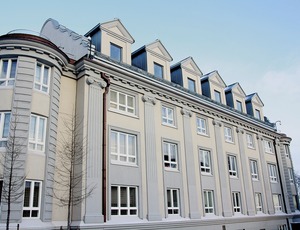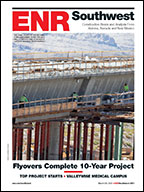

Repurposing the 100-year-old U.S. Embassy in Helsinki for current and future diplomatic and community use challenged the project team to blend historic components with new technology and heightened security mandates.
The team, from nine countries, had to accommodate extended periods of daylight and darkness as well as the far northern climate's harsh winters in developing the revamped design of the building, called the Innovation Center.
The embassy is now the U.S. government's first overseas facility with 100% LED lighting.
Its roof structure and central staircase were hand-demolished and replaced with load-bearing concrete shafts, for a new elevator and two staircases. Emergency egress and fire-protection systems required significant structural reconfiguration to meet U.S. safety standards.
"Without jeopardizing the historic character of the original building facade, the Innovation Center strikes a balance between modern functionality and sustainable design," says the team.
One judge was impressed that the team reused or repurposed 64% of the existing structure.
The project had a recorded incident rate of 2.03, resulting in 95 lost days. But two injured workers returned to complete the project.
PROJECT TEAM
Owner: U.S. Dept. of State, Bureau of Overseas Buildings Operations
Design Architect: Moore Ruble Yudell Architects & Planners, Santa Monica, Calif.
Project Architect: Page, Arlington, Va.
General Contractor: B.L. Harbert International LLC, Birmingham, Ala.
Structural Engineer: Ehlert Bryan, McLean, Va.
MEP Engineer: H&A Architects and Engineers, Glen Allen, Va.


Post a comment to this article
Report Abusive Comment